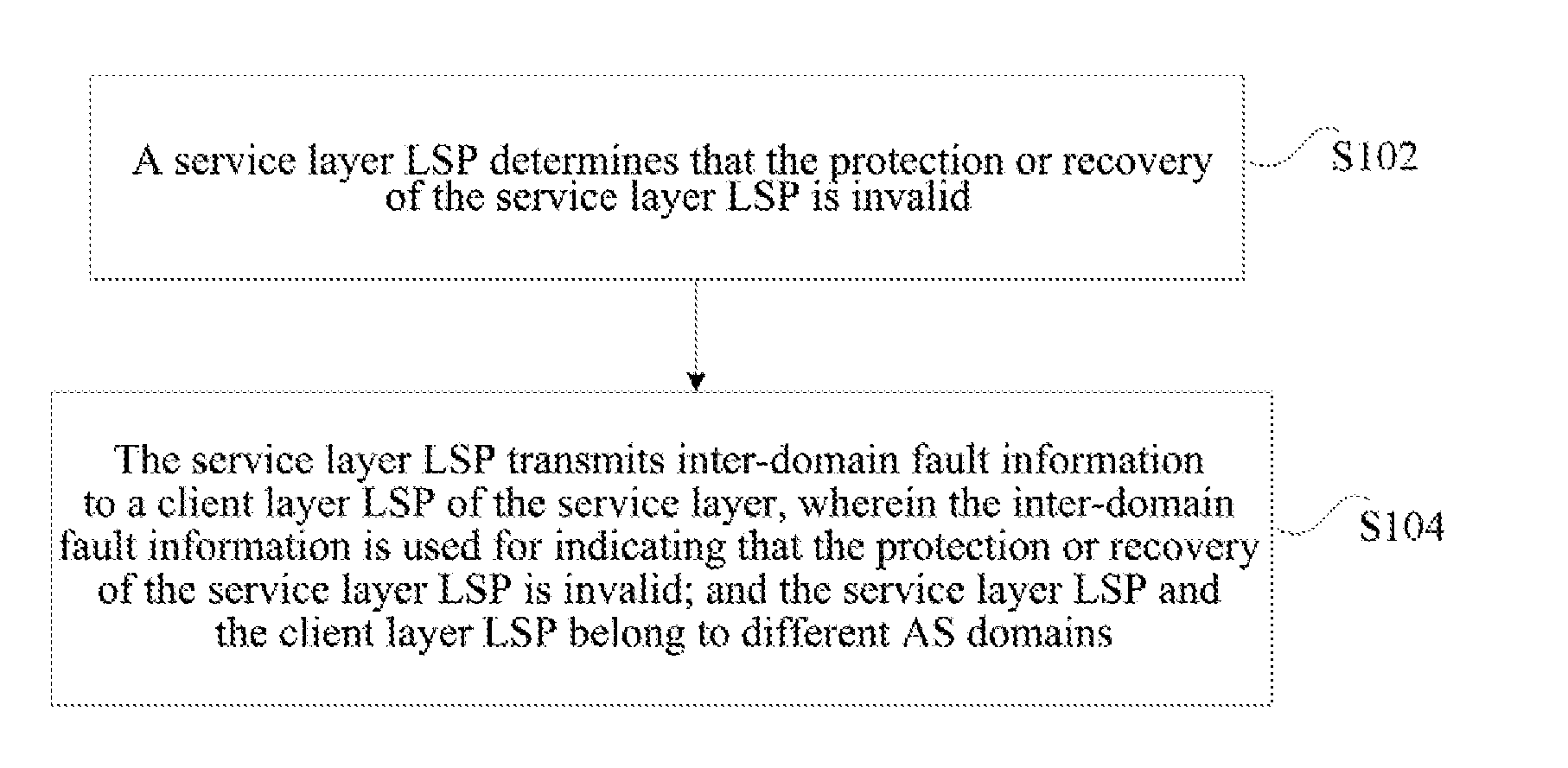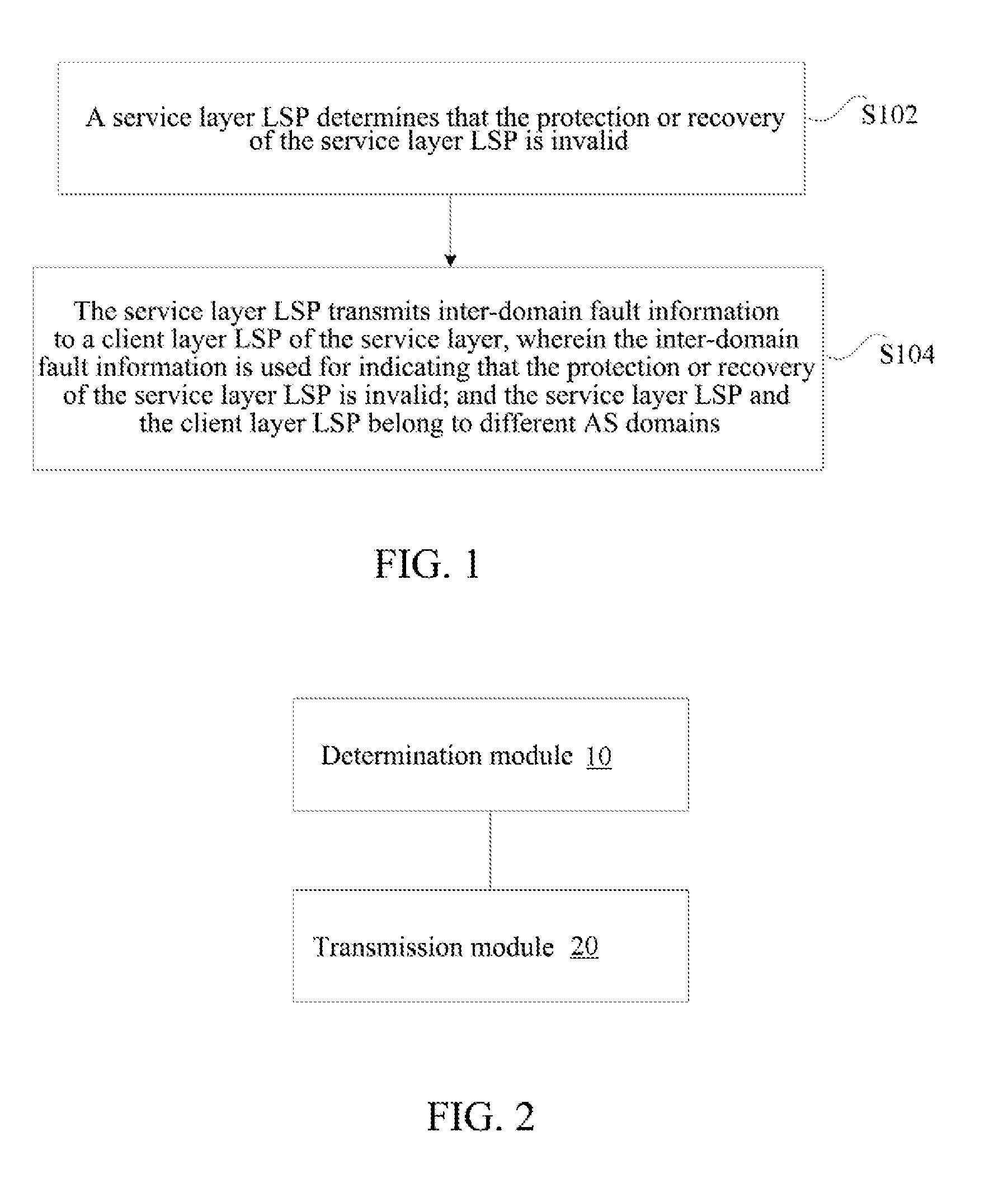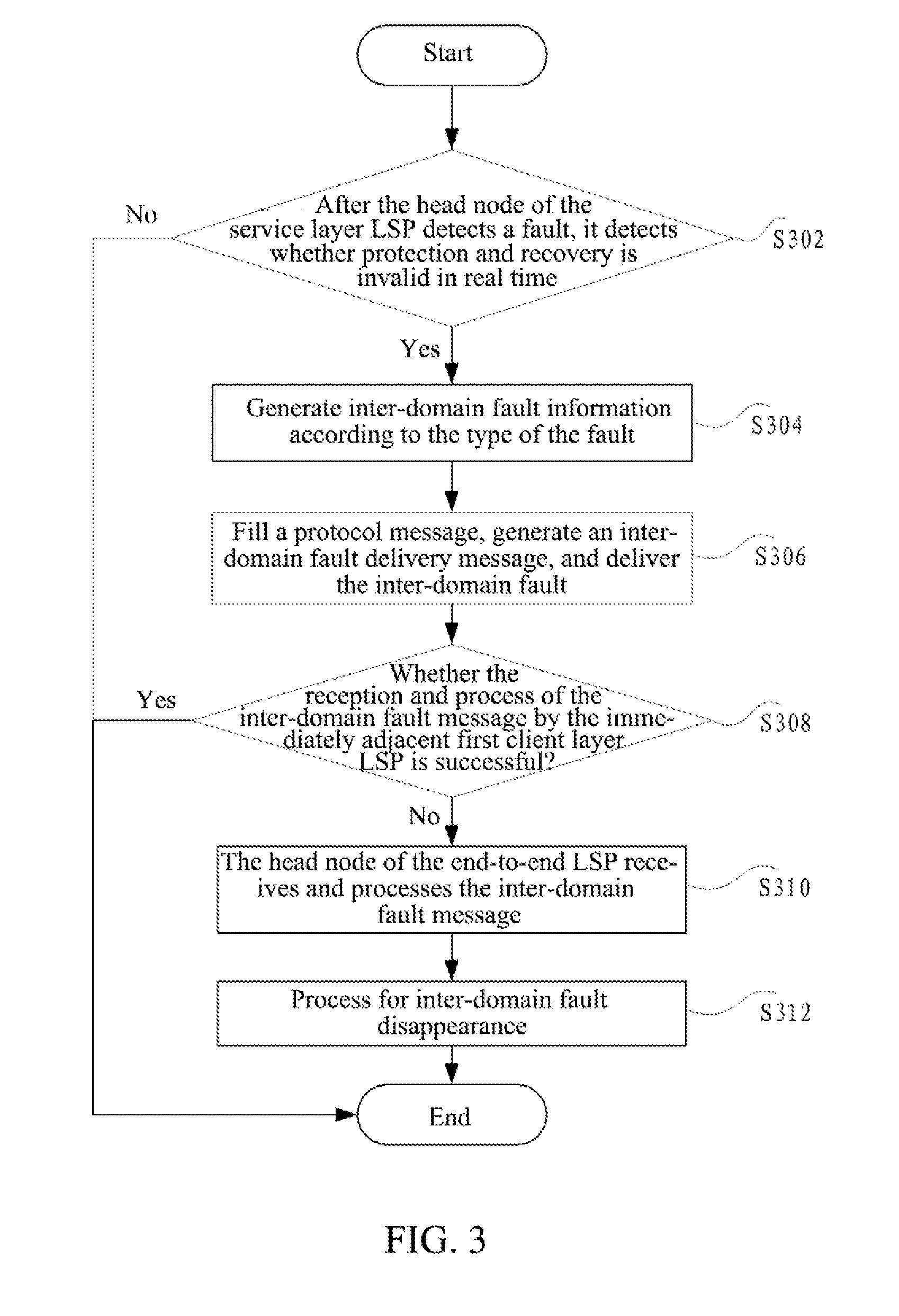Method and Device for Sending Inter-Domain Fault Information
a technology of fault information and transmission method, applied in the field of communication, can solve the problems of no effective solution proposed currently, lengthened service failure time, etc., and achieve the effect of shortening the time of end-to-end service failur
- Summary
- Abstract
- Description
- Claims
- Application Information
AI Technical Summary
Benefits of technology
Problems solved by technology
Method used
Image
Examples
embodiment one
[0046]In an embodiment of the present invention, a method for transmitting inter-domain fault information is provided, which achieves transmitting inter-domain fault information to an upper layer (client layer) LSP when protection or recovery of a lower layer (service layer) LSP is invalid, so that the upper layer LSP protects or recovers the service connection according to the inter-domain fault information.
[0047]FIG. 1 is a flowchart of a method for transmitting inter-domain fault information according to an embodiment of the present invention. As shown in FIG. 1, the method may include steps S102 to S104:
[0048]in step 102, a service layer LSP determines that the protection or recovery of the service layer LSP is invalid; and
[0049]In step S104, the service layer LSP transmits inter-domain fault information to a client layer LSP of the service layer, wherein the inter-domain fault information is used for indicating that the protection or recovery of the service layer LSP is invalid...
embodiment two
[0061]According to an embodiment of the present invention, a system for dynamic coordination of protection and recovery of multi-layer multi-domain networks is provided. At the same time, on basis of the system, a method for dynamic coordination of protection and recovery of multi-layer multi-domain networks is provided. With real-time delivery of inter-domain fault information, the problems in the multi-layer multi-domain networks that the client layer cannot learn in real time whether the protection and recovery of the service layer is successful, shortening the time of end-to-end service failure, and improving the network survivability.
[0062]The method for dynamic coordination of protection and recovery of multi-layer multi-domain networks according to the preferable embodiment comprises the following several steps (steps 1-3):
[0063]In step one, after a service layer network has a fault, a head node in the local network starts inter-domain fault detection, to detect and judge whe...
embodiment three
[0070]There are many types of bearer devices in the communication networks, and various types of devices belong to different layers respectively. These devices may be located in different regions, and therefore are distributed in different router domains. In order to solve the problems of cross-domain end-to-end LSP establishment, the IETF publishes a series of standards to extend the RSVP-TE, in which there are two solutions, one is Hierarchy-LSP (H-LSP for short) and the other is Stitching-LSP (S-LSP for short).
[0071]1) The H-LSP is an LSP created by means of hierarchy. I.e., the H-LSP (which is defined as FA-LSP by the RFC4206) may form a TE link on an upper layer (client layer) thereof; and the establishment of the upper layer LSP may use the TE link for route calculation. The H-LSP, as a service layer, may be used by many client layer LSPs.
[0072]2) The S-LSP is the LSP created by means of Stiching. I.e., the S-LSP may flood as an LSP on the same layer, and the Stiching technolo...
PUM
 Login to View More
Login to View More Abstract
Description
Claims
Application Information
 Login to View More
Login to View More - R&D
- Intellectual Property
- Life Sciences
- Materials
- Tech Scout
- Unparalleled Data Quality
- Higher Quality Content
- 60% Fewer Hallucinations
Browse by: Latest US Patents, China's latest patents, Technical Efficacy Thesaurus, Application Domain, Technology Topic, Popular Technical Reports.
© 2025 PatSnap. All rights reserved.Legal|Privacy policy|Modern Slavery Act Transparency Statement|Sitemap|About US| Contact US: help@patsnap.com



